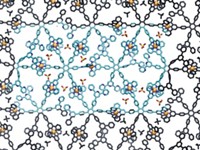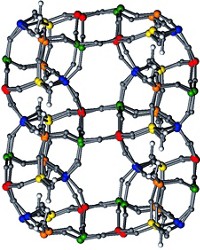Advertisement
Grab your lab coat. Let's get started
Welcome!
Welcome!
Create an account below to get 6 C&EN articles per month, receive newsletters and more - all free.
It seems this is your first time logging in online. Please enter the following information to continue.
As an ACS member you automatically get access to this site. All we need is few more details to create your reading experience.
Not you? Sign in with a different account.
Not you? Sign in with a different account.
ERROR 1
ERROR 1
ERROR 2
ERROR 2
ERROR 2
ERROR 2
ERROR 2
Password and Confirm password must match.
If you have an ACS member number, please enter it here so we can link this account to your membership. (optional)
ERROR 2
ACS values your privacy. By submitting your information, you are gaining access to C&EN and subscribing to our weekly newsletter. We use the information you provide to make your reading experience better, and we will never sell your data to third party members.
Materials
Sizing up nano-MoS2 properties
January 22, 2007
| A version of this story appeared in
Volume 85, Issue 4
Particle size is key to the stabilities and electronic properties of molybdenum disulfide nanoparticles with fullerene-like structures, according to a combined experimental and theoretical investigation (Angew. Chem. Int. Ed. 2007, 46, 623). The materials, which are under study for use as solid lubricants and in other applications, were probed via high-resolution electron microscopy, quantum mechanical calculations, and other techniques by a team of researchers based at the Technical University of Dresden and the Rossendorf Research Center, both in Germany, and at the Weizmann Institute of Science, in Israel. One of the main findings is that large MoS2 nanoparticles with diameters greater than about 10 nm, such as nanoplatelets, nanotubes, and quasi-spherical nanoparticles, are semiconductors, as is bulk MoS2. In contrast, hollow octahedral MoS2 fullerenes (shown) with diameters of about 3-7 nm are predicted to be metallic. The researchers also report that single-walled MoS2 fullerenes with octahedral shapes consisting of only a few hundred atoms are unstable, but larger multiwalled octahedra consisting of thousands of atoms are stable.





Join the conversation
Contact the reporter
Submit a Letter to the Editor for publication
Engage with us on Twitter